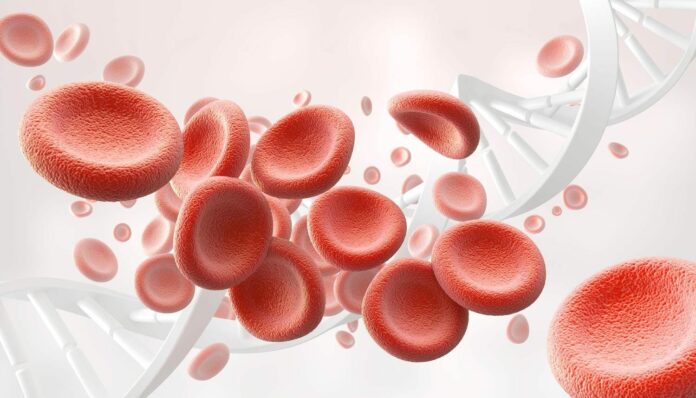Blood cells are crucial in the human body, performing essential functions and playing a role in diseases like anemia and leukemia. They include red blood cells carrying oxygen, platelets for clotting, and immune cells defending against threats.
All these cells come from hematopoietic stem cells (HSCs), which constantly produce blood cells throughout our lives. Researchers aim to grasp HSCs’ workings, studying how they make various blood cell types. This helps understand the basics of blood production and how it changes with aging or in diseases.
MIT Professor Jonathan Weissman and collaborators Vijay Sankaran and Chen Weng devised a new method to explore human blood cell family trees and individual characteristics. Published in Nature on Jan. 22, the research sheds light on differences between hematopoietic stem cell (HSC) lineages, addressing longstanding questions about blood cell production and aging. The technology also offers unprecedented access to cell histories, unlocking new insights into biology and answering previously unanswerable questions.
Weng said, “We wanted to ask questions that the existing tools could not allow us to. “This is why we brought together Jonathan and Vijay’s different expertise to develop a new technology that allows us to ask those questions and more to solve some of the important unknowns in blood production.”
Weissman and team pioneered methods to trace cell family trees, known as lineage tracing, focusing on animals and engineered cell lines. This approach revealed insights into cancer spread and mutation development. However, while helpful, these models offer a partial view of what happens inside a living human.
Lineage tracing must be done on human samples to understand how human blood cell lineages change. The challenge lies in finding a natural barcode, a changing DNA string, as researchers can’t add a barcode to cells in living humans as they did in research models.
Traditional whole-genome mutation searches are expensive and destroy needed material. Sankaran and team found mitochondrial DNA could serve as a natural barcode due to its small, mutation-prone genome.
Initially, they identified a few mutations, limiting family tree construction. Led by Weng, they enhanced mitochondrial DNA mutation detection tenfold using the ReDeeM method. This improved lineage tracing allows recreating family trees and collecting information on individual cell states, including gene expression levels and epigenome differences, without sacrificing material.
Understanding how cell lineages change over time and their effects involves combining family trees with individual cell states. Suppose a researcher identifies when a blood cell lineage starts favoring a specific type. In that case, they can analyze preceding changes in cell states. This helps identify the genes and pathways driving the behavioral shift, providing insights into the mechanisms behind the difference, not just acknowledging that it occurred.
Weissman said, “The goal is to relate the cell’s current state to its history. Being able to do that in an unperturbed human sample lets us watch the dynamics of the blood production process and understand functional differences in hematopoietic stem cells in an impossible way.”
Through this approach, researchers uncovered crucial insights into blood production, examining lineage diversity with age by mapping family trees of blood cells from hematopoietic stem cells (HSCs), known as clonal groups. Most stem cells generated all blood cell types in young individuals, but specific lineages exhibited biases. Stable differences were observed over time in healthy, young subjects.
In contrast, there was unexpected widespread clonal expansion in older individuals, where specific groups dominated, producing a higher proportion of total blood cells and reducing diversity. These findings underscore significant shifts in blood production with age, stressing the importance of understanding clonal expansion mechanisms and exploring potential disease markers within clonal groups for further research.
The ReDeeM method allowed researchers to make various observations about blood production, confirming known patterns and validating its efficiency. Now equipped with this effective tool, they aim to explore different aspects of cell relationships and mechanisms driving changes in cell behavior. Already delving into autoimmune disorders, blood cancers, and blood cell origins, the researchers encourage others to utilize their method for inquiries in various health and disease scenarios.
Practicing hematologist, Vijay Sankaran envisions a future where ReDeeM transforms patient data, allowing clinicians to assess disease risks based on the number of hematopoietic stem cells (HSCs). This method provides a new perspective on blood production dynamics, offering insights that can eventually be applied to enhance patient care.
Journal reference:
- Weng, C., Yu, F., Yang, D. et al. Deciphering cell states and genealogies of human hematopoiesis. Nature. DOI: 10.1038/s41586-024-07066-z.
